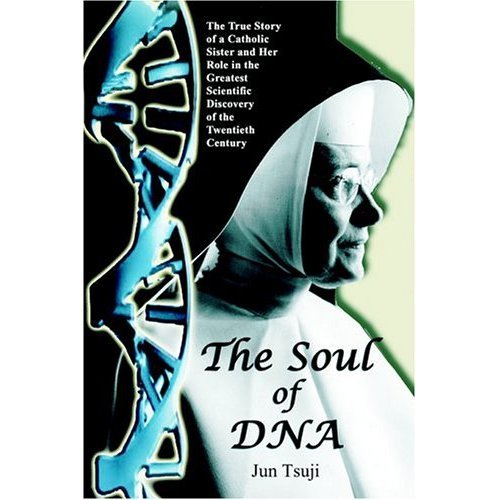The Michigan-based nun was also a prominent cancer researcher, educator, and lecturer.
Lenten Campaign 2025
This content is free of charge, as are all our articles.
Support us with a donation that is tax-deductible and enable us to continue to reach millions of readers.
The discovery of DNA, or deoxyribonucleic acid, was a groundbreaking step in understanding the building blocks of all living creatures. DNA is a molecule in each cell that bears the genetic instructions for the development and reproduction of living organisms, including viruses.
The credit for the discovery of the DNA double helix has gone to American biologist James Watson, English physicist Francis Crick and New Zealand biologist Maurice Wilkins, but they would not have won their 1962 Nobel Prize without the work of several scientists before them, including Wilkins’ colleague Rosalind Franklin and Dominican Sister Miriam Michael Stimson.

Sister Miriam (December 24, 1913 – June 17, 2002) was an Adrian Dominican and a professor of chemistry at Siena Heights University, Adrian, Michigan. Her obituary notes:
“Her early success in chemistry, working on early research examining cells, led to an invitation to lecture at the Sorbonne in Paris. She was the second woman to lecture there; the first was Marie Curie. She later received international recognition for her early work with the spectroscope, a tool used for analyzing chemicals, and wrote manuals for using the instrument.”
Beyond that, Sister Miriam worked on wound-healing hormones, helping to create Preparation H. She established a research laboratory at Siena Heights in 1939, where she researched cancer for more than 30 years. Known at Siena as “M2,”Sister Miriam introduced undergraduate research and an addiction counseling program.
Arguably, her most significant contribution in cancer research was her solution that unlocked the shape of DNA nucleobases. Jun Tsuji’s book The Soul of DNA records:
“For lack of knowledge of the DNA double helix, scientists were unable to understand the genetic roots of cancer, and subsequently they were unable to develop effective methods of treatment. In the early 1950s, scientists were on the verge of discovering the DNA double helix and unveiling cancer as a genetic disease. Stumped by the uncertainty regarding the shape of the DNA bases, the structural and functional “soul” of DNA, the male-dominated scientific establishment – from James Watson and Francis Crick to Linus Pauling – proposed models of DNA that were, in effect, inside out. In contrast, a woman, Sister Miriam Michael Stimson, OP, an Adrian Dominican sister and chemist, dared to imagine a solution to the DNA base problem. Using potassium bromide (KBr) to prepare the DNA bases for analysis by infrared spectroscopy, Sister Miriam Michael successfully developed a chemical method that affirmed the structure of the DNA bases and of the double helix itself.”
Sister Miriam saw her scientific work as a means of discovering truth that would lead us closer to God. Indeed, DNA investigations led prominent atheist philosopher Antony Flew to affirm God’s existence:
“What I think the DNA material has done is that it has shown, by the almost unbelievable complexity of the arrangements which are needed to produce (life), that intelligence must have been involved in getting these extraordinarily diverse elements to work together. It’s the enormous complexity of the number of elements and the enormous subtlety of the ways they work together. The meeting of these two parts at the right time by chance is simply minute. It is all a matter of the enormous complexity by which the results were achieved, which looked to me like the work of intelligence.”
– William West, “One Flew out of the atheists’ nest: How DNA investigations led a philosopher to affirm a ‘creative intelligence’ at the origin of life.”
Let us pray for teachers and scientists like Sister Miriam, who “was interested in each student as a person, not simply as a mind to be taught,” and was so humble about her brilliant work that students only learned about it through a book. Scientific knowledge will lead us to God, if we maintain a disposition of humility and love. As the first Director of NASA Wernher Von Braun said: “Scientific concepts exist only in the minds of men. Behind these concepts lies the reality which is being revealed to us, but only by the grace of God.”








